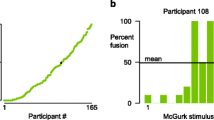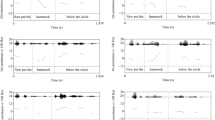Abstract
This paper examines whether the profusion of ums that so many speakers produce is noticed, and whether these ums influence what audiences think of speakers. Even though ums do not seem to be a product of anxiety or lack of preparation, the first study, using a simple questionnaire, indicated that the average listener assumes that they are. The second study manipulated um rates by editing a tape to create a version where ums were replaced by silence or were eliminated. The original and edited versions were played to audiences who were told to focus on either the content or the style, or were not given any particular instructions. Estimates of ums showed no sensitivity whatsoever in the content focus, some sensitivity without focus instruction, and greatest sensitivity with the style focus, suggesting that ums can be, but are not always, processed automatically. On subjective ratings of the speaker, filled pauses created a better impression than silent pauses, but no pauses proved best of all. The ums had an effect even in conditions where the audience was unable to report their presence.
Similar content being viewed by others
References
Bates, E., Masling, M., & Kintsch, W. (1978). Recognition memory for aspects of dialogue.Journal of Experimental Psychology: Human Learning & Memory, 4, 187–197.
Berger, C. R., Karol, S. H., & Jordan, J. M. (1989). When a lot of knowledge is a dangerous thing: The debilitating effects of plan complexity on verbal fluency.Human Communication Research, 16, 91–119.
Christenfeld, N. J. S., & Franklin, J. (1992). [The effects of preparation on speech disfluencies]. Unpublished raw data.
Christenfeld, N. J. S. (1994). Options and ums.Journal of Language and Social Psychology, 13, 192–199.
Deese, J. (1984).Thought into speech: The psychology of language. Englewood Cliffs, NJ: Prentice-Hall.
Goldman-Eisler, F. (1968).Psycholinguistics: Experiments in spontaneous speech. London: Academic Press.
Kihlstrom, J. F. (1987). The cognitive unconscious.Science, 237, 1445–1452.
Levelt, W. J. M. (1989).Speaking: From intention to articulation. Cambridge, MA: MIT Press.
Mahl, G. F. (1987).Explorations in nonverbal and vocal behavior. Hillsdale, NJ: Erlbaum.
McBurney, J. H., & Wrage, E. J. (1953).The art of good speech. New York: Prentice-Hall.
Miller, N., Maruyama, G., Beaber, R. J., & Valone, K. (1976). Speed of speech and persuasion.Journal of Personality and Social Psychology, 34, 615–624.
Nisbett, R. E., & Wilson, T. D. (1977). Telling more than we can know: Verbal reports on mental processes.Psychological Review, 84, 231–259.
Reynolds, A., & Paivio, A. (1968). Cognitive and emotional determinants of speech.Canadian Journal of Psychology, 22, 164–175.
Samovar, L. A., & Mills, J. (1983).Oral communication: Message and response, 5th ed. Dubuque, IA: W. C. Brown.
Schachter, S., Christenfeld, N. J. S., Ravina, B., & Bilous, F. (1991). Speech disfluency and the structure of knowledge.Journal of Personality and Social Psychology, 20, 362–367.
Siegman, A. W., & Pope, B. (1966). Ambiguity and verbal fluency in the TAT.Journal of Consulting Psychology, 30, 239–245.
Author information
Authors and Affiliations
Rights and permissions
About this article
Cite this article
Christenfeld, N. Does it hurt to say um?. J Nonverbal Behav 19, 171–186 (1995). https://doi.org/10.1007/BF02175503
Issue Date:
DOI: https://doi.org/10.1007/BF02175503




